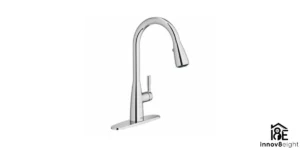Running a home improvement business means juggling a lot of responsibilities—projects, permits, clients, and compliance. Yet there’s one piece many contractors overlook until it causes a problem: their business classification. More specifically, where they fall under the NAICS code home improvement category.
This small six-digit code may seem like a minor technicality, but it plays a crucial role in how your business is licensed, taxed, insured, and evaluated. Whether you’re a seasoned remodeler or just launching your first LLC, understanding your NAICS classification could help you stay compliant, avoid legal pitfalls, and even unlock new opportunities.
What Is a NAICS Code and Why Should You Care?
The North American Industry Classification System (NAICS) is used by government agencies across the U.S., Canada, and Mexico to track and regulate businesses based on their economic activity. Every legitimate business is assigned at least one NAICS code when it registers.
But this code isn’t just a formality. It’s used for:
- Contractor licensing and bonding
- Insurance policy categorization
- Tax reporting and deductions
- Grant and loan qualification
- Market and labor research
- Government contracting
The NAICS system offers a unified way to describe exactly what your business does. For home improvement contractors, this ensures that your company is placed in the right legal and regulatory bucket.
How the NAICS Code Organizes Home Improvement Businesses
There’s no single category labeled “home improvement.” Instead, several NAICS codes fall under the umbrella of home renovation, repair, and specialty contracting. Choosing the correct one is vital.
Here are some common NAICS codes used by contractors in the home improvement field:
- 236118 – Residential Remodelers
For businesses primarily engaged in remodeling and renovating existing residential buildings. - 238160 – Roofing Contractors
Applies to companies that install or repair roofs on homes and commercial structures. - 238220 – Plumbing, Heating, and Air-Conditioning Contractors
For mechanical contractors providing HVAC or plumbing services. - 238310 – Drywall and Insulation Contractors
- 238320 – Painting and Wall Covering Contractors
- 238350 – Finish Carpentry Contractors
Each of these represents a specific trade, and your primary code should reflect the core of your business.
The Real-World Impact of the Right (or Wrong) NAICS Code
Licensing Alignment
Many state licensing boards compare your NAICS code against your stated business activities to ensure they match. A mismatch can lead to:
- Delayed approvals
- Licensing denials
- Additional documentation requests
- Licensing audits or suspensions
Imagine registering your company under general construction when you only do kitchen remodels. You might face obstacles getting the proper permit, or worse, operate under the wrong license unknowingly.
Insurance Accuracy
Insurance carriers use your NAICS code to determine risk level, liability limits, and premium pricing. If your code doesn’t reflect what you actually do, it could result in:
- Voided claims
- Coverage denial
- Increased premiums
- Legal disputes
An HVAC business misclassified as a general remodeler, for example, may not be covered in the event of a system installation failure.
Loan and Grant Eligibility
When applying for small business loans, industry-specific grants, or local contractor subsidies, the eligibility criteria often rely on your NAICS code. Programs for energy-efficient upgrades, for example, may only be available to contractors under 238220 (HVAC) or 236118 (Remodelers).
Government Contracting
Local and federal agencies often filter contractors based on their NAICS code during procurement. If your code isn’t listed accurately, you might never even see those bid opportunities.
Case Study: The Remodeler Who Almost Missed a Tax Credit
A residential remodeling firm in North Carolina focused heavily on green building techniques—LED lighting, solar integration, and energy-efficient windows. When applying for a state green construction tax credit, their application was denied.
Why? They were registered under a general residential construction NAICS code instead of 236118.
Once they updated their registration and provided documentation of their work scope, they became eligible and received the credit the following year.
Choosing the Right Code: Best Practices
1. Identify Your Primary Activity
Look at your project revenue over the past year. Where does 70–80% of your income come from? That should be your primary code.
If you offer multiple services—say painting and kitchen remodels—you can list a secondary NAICS code, but the primary should reflect the bulk of your work.
2. Review Descriptions Carefully
Each NAICS code has a detailed description. Don’t just guess based on the label. Visit the official NAICS site and read what activities are included.
3. Check Local Regulations
In some states, the local contractor board or licensing department will only accept certain NAICS codes for specific trades. Always confirm with your state authority when starting or updating your registration.
4. Update When Your Business Evolves
If your business starts offering new services, it may be time to update your NAICS code. This keeps you in compliance and ensures you’re eligible for the right programs and protections.
How to Look Up or Update Your NAICS Code
Updating your NAICS code is simple but often overlooked. Here’s how to manage it:
- Check Your Current Classification
You can look up your current code on your business registration documents or via your state’s business entity search tool. - Visit the NAICS Website
Use their search tool to find the code that best matches your current activity. - Update With the IRS or State
Depending on your location, you may need to notify your state’s business authority or amend your IRS records during your next tax filing. - Notify Your Insurance and Licensing Boards
After updating, ensure your insurance provider and contractor licensing agency have your new classification.

FAQs
What if my business fits more than one NAICS category?
You can list secondary NAICS codes, but only one should be your primary. Choose the one that reflects your most common or most profitable service.
Will changing my NAICS code affect my taxes?
Not directly, but it can change which deductions you qualify for or trigger review if it doesn’t align with reported income sources.
Can I change my NAICS code at any time?
Yes, but it’s best done during business renewal, licensing updates, or tax filings to ensure consistency across all records.
Do I need to list a NAICS code on my contractor license?
Many states don’t require it on the license itself, but they do verify it when approving licenses or renewals. Some use it to pre-qualify contractors for specialty work.
Final Thoughts
Understanding your placement in the NAICS code home improvement category isn’t just about bureaucracy—it’s a cornerstone of running a legally sound, financially protected, and competitive business. From licensing to funding, it touches nearly every operational aspect.
Take a few minutes today to verify your classification. It could save you hours of regulatory trouble and open new doors for your business in the future.







